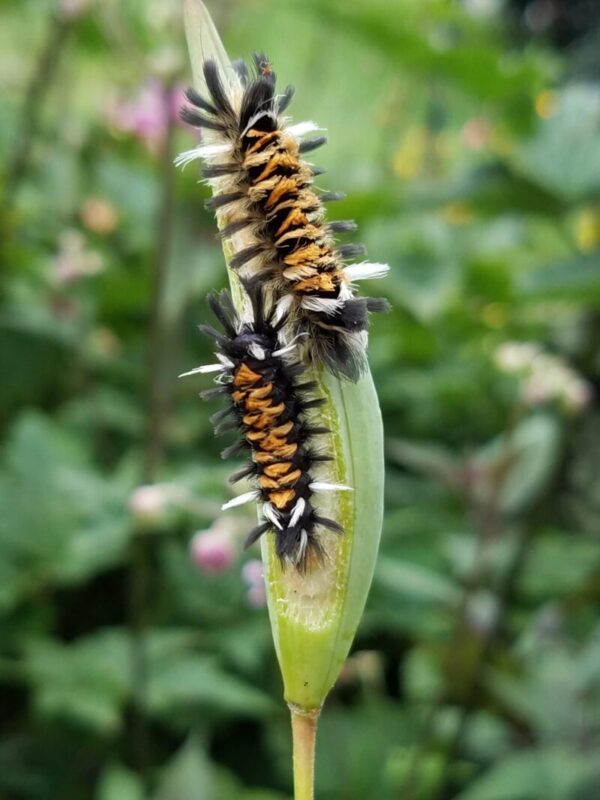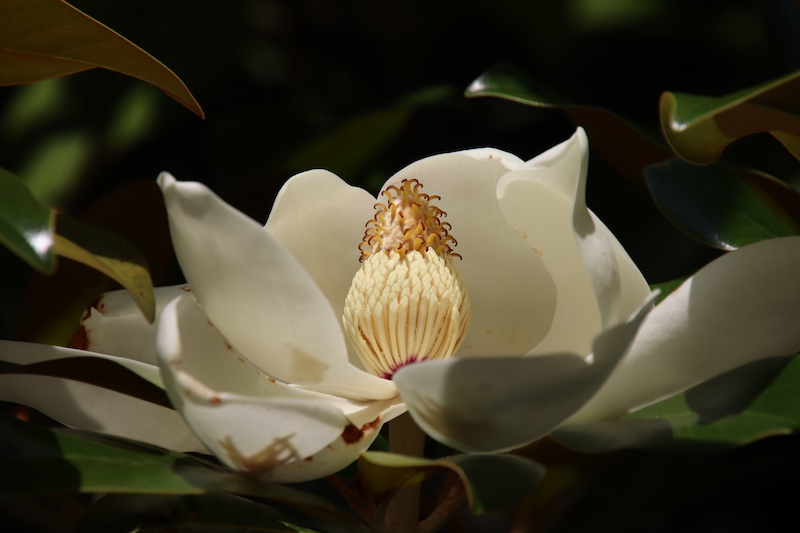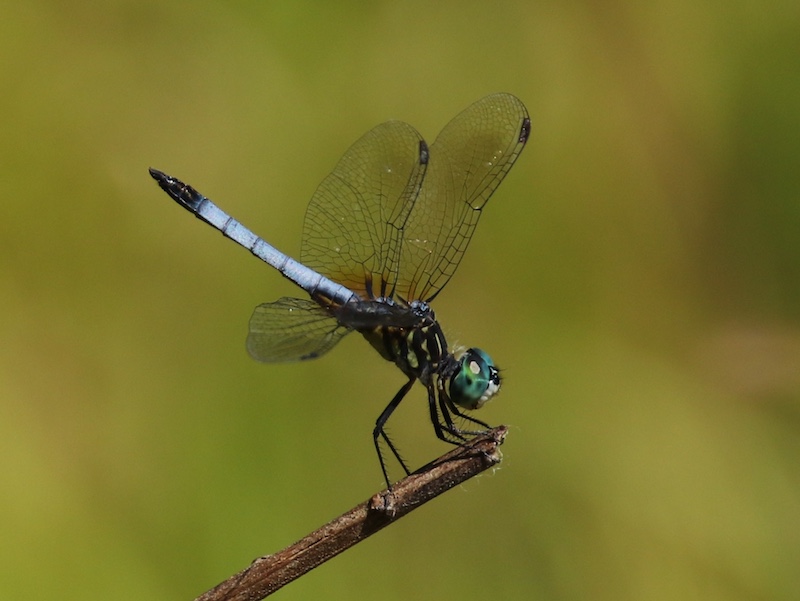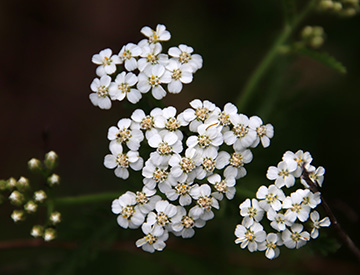


Nonpartisan and Education-based News for Chestertown


The Spy Newspapers may periodically employ the assistance of artificial intelligence (AI) to enhance the clarity and accuracy of our content.

Ecological horticulturist, Rebecca McMackin speaks at the Avalon Theatre on Sunday, Nov 9th, 2024
Adkins Arboretum is proud to announce the 2025 Naturally Better Landscaping Speaker Series, a free four-part series designed to help homeowners, HOA boards, land managers, and community members explore practical and inspiring ways to care for the land using native plants and ecology-based practices.
This series is part of the larger Naturally Better Landscaping, a multi-year education and outreach initiative developed initially in partnership with ShoreRivers, and now in an extended collaboration with Eastern Shore Land Conservancy, Pickering Creek Audubon Center, and Phillips Wharf Environmental Center. The project is generously funded by the Chesapeake Bay Trust and Queen Anne’s County. This year’s speaker series expands on the success of earlier events, offering timely guidance from nationally recognized experts in the fields of horticulture, ecology, and design. Attendees will gain insight into how everyday landscaping choices impact pollinators, water quality, and climate resilience, and how to create landscapes that benefit both people and wildlife.
2025 Speaker Schedule:
Specialist Bees with Heather Holm Saturday, August 9, 1–3 p.m. Cadby Theatre, Chesapeake College, Wye Mills, MD. Register here. Discover the vital relationships between native plants and specialist bees, and how to support them on your property.
What Do You Mean I’m Not a Perennial?! Native Shrubs and Small Trees for Perennial Companionship with Bill Cullina Sunday, August 31, 2–3:30 p.m. Oxford Community Center, Oxford, MD. Register here. Learn how to enhance the beauty and structure of your garden using native woody plants that work in harmony with perennials.
Cultivating Change: A Native Landscaping Success Story Saturday, October 25, 2–3:30 p.m. Adkins Arboretum, Ridgely, MD. Register here. A panel of Cove Creek Club residents shares how their HOA shifted to native plantings, what worked, what didn’t, and what’s next.
Reimagining Our Landscapes: A Talk by Rebecca McMackin Sunday, November 9, 2–4 p.m. Avalon Theatre, Easton, MD. Register here. Ecological horticulturist Rebecca McMackin will explore how we can transform gardens and green spaces into thriving, resilient ecosystems that support biodiversity and respond to a changing climate.
All events are free and open to the public. To ensure adequate seating and materials, pre-registration is encouraged. For more information, visit adkinsarboretum.org or call 410-634-2847. A 400-acre native garden and preserve, Adkins Arboretum provides exceptional experiences in nature to promote environmental stewardship.
The Spy Newspapers may periodically employ the assistance of artificial intelligence (AI) to enhance the clarity and accuracy of our content.


The Spy Newspapers may periodically employ the assistance of artificial intelligence (AI) to enhance the clarity and accuracy of our content.


The Spy Newspapers may periodically employ the assistance of artificial intelligence (AI) to enhance the clarity and accuracy of our content.
Happy Mystery Monday!
Can you guess what is pictured in photo #1?

The answer to last week’s mystery is milkweed, Asclepias, pictured in photo #2.

Unlike most flowers, milkweed does not produce loose pollen, but waxy, sticky balls of pollen called pollinia. Each milkweed blossom has a small slit leading down a chamber to the pollinia. When insects land on the droopy milkweed flowers, clinging to the petals as they feed on nectar, a foot can slip into the slit and come in contact with pollinia. When an insect pulls its foot out of the slit, it brings the pollinium with it. Should that same foot slip into another milkweed flower’s slit, the pollen can be transferred, facilitating fertilization.
Milkweed plants typically produce a lot of nectar. The nectar replenishes overnight, gratifying nocturnal moths. The remaining nectar is ready for the first diurnal visitors in the morning.
To access nectar, floral visitors prop themselves on one of the five flower hoods, sliding their tongues down the side of the hood where the nectar is held. They must be careful not to slip their leg down into the flower between the slits. Sometimes insects get stuck in a slit and are never able to free themselves. Some insects are not robust enough to remove their legs from the anther slits with the attached pollinia and are trapped to die there if they don’t lose their appendage first. Other times, they must tear off their own limbs to escape. Even if an insect does manage to pry its leg out of the trap door, some insects are unable to remove the pollinia.
One or two pollinia will slow an insect down, but too many can make it difficult to move. Despite the potential harm of visiting a milkweed flower, for many insects, this is a reliable source of nectar that is worth the risk.
Mystery Monday is sponsored by the Spy Newspapers and Adkins Arboretum.
The Spy Newspapers may periodically employ the assistance of artificial intelligence (AI) to enhance the clarity and accuracy of our content.
In a lively mix of nature and art, artists from the Mid-Atlantic region have created a wide range of site-specific sculptures for Adkins Arboretum’s 12th biennial Outdoor Sculpture Invitational, Artists in Dialogue with Landscape, on view through September 30. There will be a reception and guided sculpture walk with the artists on Saturday, June 21, from 2:00 to 4:00 pm.
The show begins with a pair of teardrop-shaped palm husks hanging from the limb of a pine outside the Visitor’s Center. One is a natural cinnamon-brown, the other is painted with colorful, abstracted flowers and leaves. Both are beautiful and eye-catching, raising thoughts about how human-made beauty compares with nature’s.
Created in collaboration by Ceci Cole McInturff of Alexandria, VA and New York painter Antoinette Wysocki, more of these palm husks dangle and spin among the forest trees. Just down the creekside path is another collaboration, this one by McInturff and Washington artist Chris Combs. Titled “Creature/Machine,” all of its palm husks are natural except for one where a tangle of wires and electronics is tucked inside. A solar-powered simulation of single-cellular life, it’s a tongue-in-cheek musing on whether it’s better to live as a creature or a machine.
In another mischievous look at technology’s relationship with nature, Combs created a solar-powered sculpture that counts units of time with LED lights flashing at intervals from 1 second up to 68 years. In sharp contrast is “Neverneverland (A Sundial)” by Stephanie Garon of Urbana, MD. With solar-powered technology dating back to ancient Egypt and Babylon, this analemmatic sundial uses the visitor’s own shadow to make the relationship of sun and earth visible.
Playing with changing light and shadow, opacity and transparency, “Filter,” by Alexandria artist Marcos Smyth, uses pieces of burlap loosely stretched between the branches of young trees like sails or tent caterpillar webs to capture the ever-changing beauty of the forest.
The forest’s beauty and its vulnerability led Melissa Burley of Laurel, MD to create several hollow concrete balls planted with saplings, ferns, and varicolored moss. Like tiny planets or ecosystems, they call to mind the accelerating loss of natural landscapes to development, yet inspired by her memory of a weeping willow sprouting through the cracks in an asphalt parking lot, they also prove the tenacious drive of life to grow even under difficult circumstances.
Arlington artist Isabella Whitfield’s “Ringside” evokes this urge with its thousands of sweetgum balls laboriously collected throughout the forest to fill a ten-foot disk spreading under the trees. While a single seedpod might seem insignificant, the sheer quantity she gathered speaks volumes about the fertility and abundance of life in the forest. Also captivated by these spiny balls, Nada Romanos Abizaid of McLean, VA turned one of the forest’s small wooden bridges into a magical portal by crowning two of its pilings with a pair of ceramic sculptures covered with oversized knobs and spiky protuberances inspired by sweetgum balls.
Likewise fascinated by the potential of seedpods, as well as sprouting plants and flowers, Falls Church, VA artist Marc Robarge created a compelling series of small ceramic sculptures as finely detailed as pine cones or budding flowers. So animated that they almost seem like tiny animals, their ambiguous character blurs the distinction between what is human made and what is natural to the forest. Both Elizabeth McCue of Yardley, PA and Bridgette Guerzon Mills of Towson, MD focused on the mycorrhizal network, an underground symbiotic network of fungi and plant roots that allows trees to communicate and share resources. The spidery white lines of Mills’s plaster-covered wire interwoven with crocheted thread evoke the mycorrhizal fibers hidden underground throughout the forest. McCue’s colorful web of branches stretching from a large “Mother Tree” to a nearby tree injured long ago by logging or an accident tell of how trees are able to help sustain one another through this network. Interconnected and interdependent, they are an integral part of the forest’s ecology.
This show is part of Adkins Arboretum’s ongoing exhibition series of work on natural themes by regional artists. It is on view June 1 through September 30 at the Arboretum Visitor’s Center located at 12610 Eveland Road near Tuckahoe State Park in Ridgely.
For gallery hours or more information, contact Adkins Arboretum at 410-634-2847, or visit adkinsarboretum.org.
A 400-acre native garden and preserve, Adkins Arboretum provides exceptional experiences in nature to promote environmental stewardship.
The Spy Newspapers may periodically employ the assistance of artificial intelligence (AI) to enhance the clarity and accuracy of our content.


Magnolia is a large genus of 210–340 species of the family Magnolioideae. They’re a native evergreen tree or shrub with a straight trunk, conical crown, and very fragrant, large, white flowers. Their flowers are waxy and their oblong leaves are shiny and green with silvery undersides.
The Spy Newspapers may periodically employ the assistance of artificial intelligence (AI) to enhance the clarity and accuracy of our content.
Happy Mystery Monday! Can you guess what is pictured in photo #1?

The answer to last week’s mystery is blue dasher dragonfly, Pachydiplax longipennis, pictured in photo #2.

The blue dasher dragonfly is one of the most common dragonflies in North America and can be found at most still, calm water habitats within its wide range.
Blue dashers are small skimmers. Mature male blue dashers, as pictured here, are chalky blue with a dark abdomen tip, white face, and turquoise eyes. There is a wedge of rust color on each side of the abdomen, behind the wings. Female blue dashers are a little less colorful and have red eyes, as opposed to blue.
Some dragonflies perch with their abdomens pointed upward as a means of thermoregulation. The position is typically used for cooling, lowering the amount of body surface exposed to the sun.
Mystery Monday is sponsored by the Spy Newspapers and Adkins Arboretum.
The Spy Newspapers may periodically employ the assistance of artificial intelligence (AI) to enhance the clarity and accuracy of our content.
Mixed-media artist Caryn Martin will be presenting her work in the solo exhibition Unanchored from July 1–August 29, 2025, at the Adkins Arboretum Gallery. The public is invited to a reception on Saturday, July 12, from 2–4 pm, with the artist in attendance. Martin’s works on panel, made from unused and repurposed artworks by the artist, as well as paper and acrylic paint, explore the transient and vulnerable elements of nature. The layered textures and shifting nuances in color seek to capture the momentary essence of these elements, such as water, fire, mist, and air. Martin’s practice employs diverse mediums, spanning from large-scale site-specific sculptural installations made from paper materials to monotypes. In her practice, the artist often uses the remnants of these monotypes to create new works, churning previous explorations into new forms. The artist approaches mark-making as a process rather than a gesture, changing the traditional structure of paper and pulp over time and in cumulation.
In her works on view at the Adkins Arboretum Gallery, Martin harkens to forces of nature, both soft and hard, nurturing and shaping – all of which can be observed just beyond the Arboretum’s Visitor Center. Martin states that her interest in dualities, whether found in weather patterns and shifting pressure or the very process she uses to create her works, drives her aesthetic and compositional decisions. The resulting pieces contain contrasting elements that draw the viewer in and invite a close look at the individual currents, which make up the composite whole. Martin’s subtly-percolating colors and forms represent interesting reprises to a wide variety of experiences in nature. The artist encourages us to think not only of serene moments that ground us but also the more complex reality of climate change and human and industrial impact.
Martin is a Baltimore-based artist, educator, and creative coach. She received her MFA and MAT degrees from Maryland Institute College of Art and her BA in Studio Art from University of Maryland College Park. Her work has been featured in solo and group exhibitions at Creative Alliance Baltimore, Kohl Gallery at Washington College, Delaplaine Arts Center, Institute of Contemporary Art Baltimore, Maryland Art Place, the Mitchell Gallery at St. John’s College, and others. She is represented by Catalyst Contemporary in Baltimore.
This exhibition is part of Adkins Arboretum’s ongoing series highlighting regional artists whose work engages with natural themes. The Arboretum is located at 12610 Eveland Road in Ridgely, Maryland. For gallery hours or more information, contact Adkins Arboretum at 410-634-2847, or visit adkinsarboretum.org. A 400-acre native garden and preserve, Adkins Arboretum provides exceptional experiences in nature to promote environmental stewardship.
The Spy Newspapers may periodically employ the assistance of artificial intelligence (AI) to enhance the clarity and accuracy of our content.
Happy Mystery Monday! Can you guess what is pictured in the photo below:

The answer to last week’s mystery is yarrow, Achillea millefolium, pictured in the photo below:

Yarrow is a herbaceous perennial native to North America. It has feather-like leaves and flat-topped clusters of tiny, fragrant white to pink flowers. Yarrow can be found in cultivated gardens, and beside fields, mountains, and roadsides.
Yarrow is pest- and drought-resistant. Full sun exposure encourages compact growth and many flowers. In partial sun or in shade, yarrow tends to grow leggy. It thrives in hot, dry conditions and does not tolerate constantly wet soil.
Native bees are attracted to yarrow in large numbers. Butterflies are also drawn to yarrow. It makes a nice addition to fresh or dried flower arrangements.
Yarrow’s Latin name, Achillea, comes from the Greek hero Achilles, who was said to have used yarrow to treat wounds of his soldiers during the Trojan War.
Mystery Monday is sponsored by the Spy Newspapers and Adkins Arboretum.
The Spy Newspapers may periodically employ the assistance of artificial intelligence (AI) to enhance the clarity and accuracy of our content.